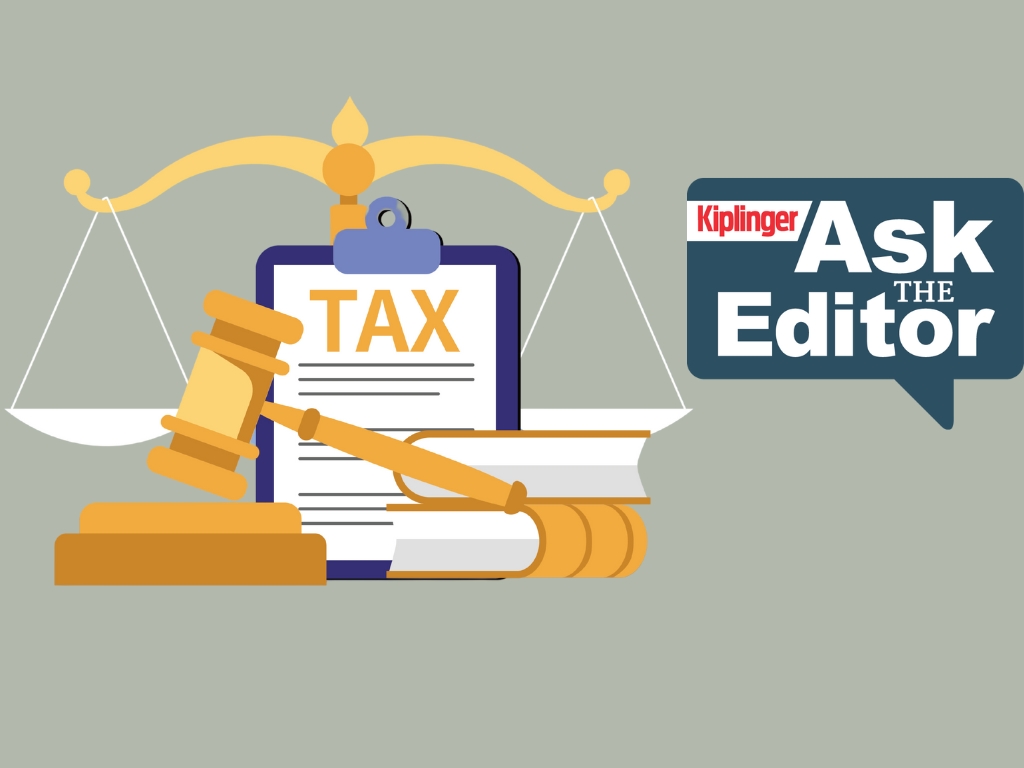Medicare Premiums 2025: IRMAA Brackets and Surcharges for Parts B and D
Medicare participants with an income above the threshold must pay a surcharge for Medicare Part B and Part D based on their income.


If you have Medicare Part B and/or Medicare Part D prescription drug coverage, you could owe a monthly surcharge based on an income-related monthly adjustment amount (IRMAA). These surcharges apply to enrollees in Original Medicare and Medicare Advantage plans.
The 2025 IRMAA income brackets and Parts B and D surcharges have been announced. This year, Medicare beneficiaries with income over $106,000 (for single tax filers), $212,000 for joint filers and $106,000 (for married people who file separately) will pay the surcharge. For these beneficiaries, total Monthly Part B premiums will range from $259.00 to $628.90.
The Social Security Administration determines your IRMAA eligibility and represents an increase to Medicare Part B and Part D standard monthly premiums. The IRMAA surcharge is calculated on a sliding scale with five income brackets topping out at $500,000 and $750,000 for individual and joint filing, respectively. These figures change annually with inflation. IRMAA calculations have a two-year lag time. Whether you pay an IRMAA in 2025 depends on the income shown on your 2023 tax returns.

Sign up for Kiplinger’s Free E-Newsletters
Profit and prosper with the best of expert advice on investing, taxes, retirement, personal finance and more - straight to your e-mail.
Profit and prosper with the best of expert advice - straight to your e-mail.
Public sector retirees who received a raise might be fretting that the increase in benefits from the Social Security Fairness Act could trigger the IRMAA in 2026 or 2027. Unfortunately, those retirees will have to wait to find out if the increase in monthly benefits will be big enough to do so.
You should be mindful of the risk of a one-time spike in income that could trigger the IRMAA. For instance, timing a Roth conversion properly, you can avoid the IRMAA when you convert and when you take distributions. Learn more about strategies such as how to lower taxes on required minimum distributions.
Here's a look at the IRMAA and what it may cost you in 2025.
What is IRMAA?
The IRMAA is a surcharge that some Medicare enrollees must pay in addition to regular Medicare Part B and Part D premiums. The surcharge is based on your Modified Adjusted Gross Income (MAGI) from two years ago. In other words, the 2025 IRMAA brackets are based on your MAGI from 2023.
The SSA determines who pays an IRMAA based on the income reported two years prior. So, the SSA looks at your 2023 tax returns to see if you must pay an IRMAA in 2025.
For 2025, beneficiaries whose 2023 income exceeded $106,000 (individual return) or $212,000 (joint return) pay a higher total Medicare Part B premium amount depending on income. The 2025 IRMAA surcharge amounts for Part B will added on top of the basic Part B premium of $185.00, an increase of $10.60 from 2024. Part B surcharges range from $74.00 to $443.90.
You can easily determine your 2025 Part B and Part D total premiums by adding the income-related monthly adjustment amount to the 2025 premium costs. For 2025, the Part B premium is $185.00 and the Part D is, on average, $46.50.
Income brackets and surcharge amounts for Part B and Part D IRMAA
Single | Married filing jointly | Part B Income-Related Monthly Adjustment Amount | Part D Income-Related Monthly Adjustment Amount |
|---|---|---|---|
Less than or equal to $106,000 | Less than or equal to $212,000 | $0.00 | $0.00 |
Greater than $106,000 and less than or equal to $133,000 | Greater than $212,000 and less than or equal to $266,000 | $74.00 | $13.70 |
Greater than $133,000 and less than or equal to $167,000 | Greater than $266,000 and less than or equal to $334,00 | $185.00 | $35.30 |
Greater than $167,000 and less than or equal to $200,000 | Greater than $334,00 and less than or equal to $400,000 | $295.90 | $57.00 |
Greater than $200,000 and less than $500,000 | Greater than $400,000 and less than $750,000 | $406.90 | $78.60 |
Greater than or equal to $500,000 | Greater than or equal to $750,000 | $443.90 | $85.80 |
The income adjustments for Medicare enrollees who are married and lived with their spouses at any time during the year, but who file separate tax returns from their spouses are steeper than for married couples filing jointly.
Here are the 2024 IRMAA amounts for married taxpayers who file separately:
Part B Coverage. For 2025, if your income is greater than $106,000 and less than $394,000, the IRMAA amount is $406.90. If your income is greater than or equal to $394,000, the IRMAA amount is $443.90.
Medicare Part D. If your income is greater than $106,000 and less than $394,000, the IRMAA amount is $78.60. If income is greater than or equal to $394,000 the IRMAA amount is $85.80.
Types of income that trigger the IRMAA
The Medicare surcharge is based on your modified adjusted gross income (MAGI) from two years ago. Use your 2023 tax return to see if your a liable for the surcharge in 2025.
For 2025, the surcharge is based on your MAGI in 2023. For purposes of calculating the surcharge, MAGI consists of your adjusted gross income plus:
- Tax-exempt interest that has been earned or accrued. For instance, municipal bonds, which can be significant for a lot of retirees
- Interest from US savings bonds used for qualifying education expenses
- Income earned abroad that was excluded from gross income
- Nontaxable income from U.S. territories including Puerto Rico, Guam, American Samoa and the Northern Mariana Islands
A well-timed Roth IRA conversion can help you avoid the IRMAA as distributions from Roth accounts do not count toward your MAGI.
The good news is that you can appeal and request a redetermination, especially if you’ve had a life-changing event, such as the death of a spouse or the loss of pension income.
How to pay your Part B and Part D IRMAA
IRMAA surcharges for Part B and Part D are paid separately. Part B IRMAA is automatically added to your monthly premium bill. While the Part D IRMAA must be paid directly to Medicare — not your plan or employer. It’s your responsibility to pay it even if your employer or a third party (e.g., retirement system) pays your Part D plan premiums. You’ll get a bill each month from Medicare for your Part D IRMAA, and you can pay it the same way you pay your Part B premiums.
All Medicare bills are due on the 25th of the month. In most cases, your premium is due the same month that you get the bill. If you miss a payment, or if Medicare gets your payment late, your next bill will also include a past due amount.
Here are four ways you can pay your Part B premium:
- Online through your secure Medicare account, which is the fastest way to pay. Use this free service to pay by credit card, debit card, or from your checking or savings account. Don’t create or use a Pay.gov account to make your Medicare payment. Use your Medicare account to pay your bill
- Sign up for Medicare Easy Pay. With this free service, Medicare automatically deducts your premium payments from your savings or checking account each month. It can take up to 6-8 weeks for your automatic deductions to start. You'll need to pay your premiums another way until your automatic deductions start
- Mail your payment to Medicare. Pay by check, money order, credit card, or debit card. Fill out the payment coupon at the bottom of your bill, and include it with your payment. If you’re paying by credit or debit card, be sure to complete and sign the coupon. If you don’t have your payment coupon, write your Medicare Number on the check or money order. If you don’t sign the coupon, Medicare can’t process your payment and it will be returned to you. Use the return envelope that came with your bill, and mail your Medicare payment coupon and payment to: Medicare Premium Collection Center, PO Box 790355, St. Louis, MO 63179-0355
- Use your bank’s online bill payment service
Notification of IRMAA liability and what you can do
If Social Security determines that you should pay an IRMAA, they will mail you a notice called an initial determination. This notice should include information on how to request a new initial determination. A new initial determination is a revised decision that Social Security makes regarding your IRMAA.
If you can demonstrate to Social Security that a “life-changing event” has affected your income, it will reduce or waive your premiums. If your request for a redetermination is denied, you can appeal that decision. There are three additional levels of appeals you can try: to the Office of Medicare Hearings and Appeals, to the Medicare Appeals Council and finally to the federal district court where you live. You may need to hire an attorney for some of these levels, which are primarily used by beneficiaries appealing decisions about coverage.
Keep an eye on your income
The IRMAA is a “cliff” surcharge. That means if your modified adjusted gross income exceeds the threshold by as little as a dollar, you will have to pay higher premiums. Your eligibility is based on your income two years before an assessment. In 2025, it is based on your 2023 income.
Public sector retirees who received a raise might be fretting that the increase in benefits from the Social Security Fairness Act could trigger the IRMAA in 2026 or 2027. Unfortunately, those retirees will have to wait to find out if the increase in monthly benefits will be big enough to do so. The Social Security Administration hasn't released any information about when the increases will be paid, other then it will be a long process and may take over a year to fully implement.
You should be mindful of the risk of a one-time spike in income that could trigger the IRMAA. For instance, by timing a Roth conversion properly, you can avoid the IRMAA when you convert and when you take distributions. Learn more about strategies, such as how to lower taxes on required minimum distributions.
Related Content
Profit and prosper with the best of Kiplinger's advice on investing, taxes, retirement, personal finance and much more. Delivered daily. Enter your email in the box and click Sign Me Up.

Donna joined Kiplinger as a personal finance writer in 2023. She spent more than a decade as the contributing editor of J.K.Lasser's Your Income Tax Guide and edited state specific legal treatises at ALM Media. She has shared her expertise as a guest on Bloomberg, CNN, Fox, NPR, CNBC and many other media outlets around the nation. She is a graduate of Brooklyn Law School and the University at Buffalo.
-
 Ask the Editor — Tax Questions on Inherited IRAs
Ask the Editor — Tax Questions on Inherited IRAsAsk the Editor In this week's Ask the Editor Q&A, we answer tax questions from readers on the rules on inheriting IRAs.
-
 I Asked Experts When It's Worth Splurging on Beauty and Skincare — and When You Can Save
I Asked Experts When It's Worth Splurging on Beauty and Skincare — and When You Can SaveSmart Shopping Experts agree that while you don't have to spend three figures on your products, some higher-priced items have value.
-
 The Retirement 'Rule of $1 More'
The Retirement 'Rule of $1 More'The 'Rule of $1 More' explains how to plan for critical retirement thresholds. Because "you don't want to step off a cliff just because of $1 more."
-
 My First $1 Million: Retired Self-Employed Attorney, 75, Coast of Washington
My First $1 Million: Retired Self-Employed Attorney, 75, Coast of WashingtonEver wonder how someone who's made a million dollars or more did it? Kiplinger's My First $1 Million series uncovers the answers.
-
 Retiring Early? This Strategy Cuts Your Income Tax to Zero
Retiring Early? This Strategy Cuts Your Income Tax to ZeroWhen retiring early, married couples can use this little-known (and legitimate) strategy to take a six-figure income every year — tax-free.
-
 Ditch the Golf Shoes: Your Retirement Needs a Side Gig
Ditch the Golf Shoes: Your Retirement Needs a Side GigA side gig in retirement can help combat boredom, loneliness and the threat of inflation eroding your savings. And the earlier you start planning, the better.
-
 Roth IRA Conversions in the Summer? Why Now May Be the Sweet Spot
Roth IRA Conversions in the Summer? Why Now May Be the Sweet SpotConverting now would enable you to spread a possible tax hit over more than one payment while reducing future taxes.
-
 I'm an Insurance Expert: This Is How Your Insurance Protects You While You're on Vacation
I'm an Insurance Expert: This Is How Your Insurance Protects You While You're on VacationHere are three key things to consider about your insurance (auto, property and health) when traveling within the U.S., including coverage for rental cars, personal belongings and medical emergencies.
-
 Investing Professionals Agree: Discipline Beats Drama Right Now
Investing Professionals Agree: Discipline Beats Drama Right NowBig portfolio adjustments can do more harm than good. Financial experts suggest making thoughtful, strategic moves that fit your long-term goals.
-
 'Doing Something' Because of Volatility Can Hurt You: Portfolio Manager Recommends Doing This Instead
'Doing Something' Because of Volatility Can Hurt You: Portfolio Manager Recommends Doing This InsteadYes, it's hard, but if you tune out the siren song of high-flying sectors, resist acting on impulse and focus on your goals, you and your portfolio could be much better off.